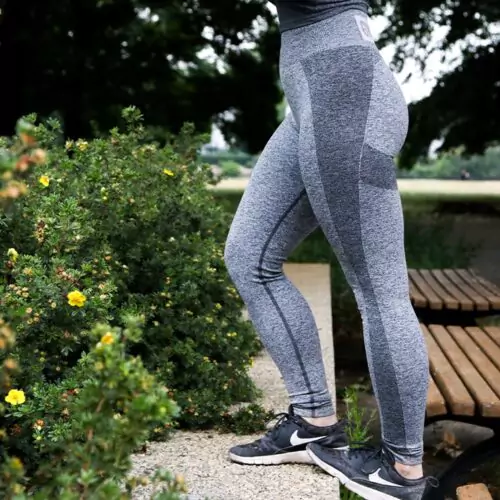People often say, it’s the little things in life that
make the biggest impact. I say, it’s the smallest
parts of your body that cause the biggest problem.
The piriformis is a small muscle deep in your hip,
and it has give me trouble for years. It runs
diagonally across your buttock from your pelvis
to your thigh bone. It acts up when I decide I’m
going to start running, have a baby, or just sit too
much. And it might be giving you trouble too and
you don’t even know it.
Why is it such a problem for so many?
Although small and seemingly insignificant it is
located next to a thick nerve. The infamous sciatic
nerve runs from the base of your spine down the
back of your leg. We have individuals walk into our
clinic every week reporting (often self diagnosed)
sciatica as the cause of their back and leg pain.
You can feel your piriformis right in the middle of
your buttock muscle. Pressing deep into the tissue,
people often report local pain, or even pain that
radiates down their leg. It is a common muscle to
experience trigger points and muscle spasms. . .
literally a pain in the butt!
Piriformis muscle injury, called piriformis syndrome
can occur due to a trauma like a car accident or fall.
However, more commonly, we do not see a true
piriformis syndrome but an irritation due to repetitive
everyday activities or athletic activities.
Symptoms of piriformis syndrome include:
- Pain, tightness, or tingling in your low back
- Discomfort extends down the back of the leg
- buttock pain and tightness
- Weakness in the legs
- Pain that is worse with prolonged sitting
Piriformis involvement is often overlooked because
it mimics other diagnoses including low back injury,
arthritis, degeneration, disc herniation, or even hip
bursitis.
The most common cause is weak buttock muscles
due to excessive sitting. Additionally, poor sitting
posture can cause the piriformis to be overworked
and spasm.
The differentiation between piriformis involvement
and other back conditions are typically increased
pain after sitting 15-20 minutes and with crossing
your legs in sitting.
Unfortunately, rest or repositioning doesn’t usually
fix this problem. Treatment by a healthcare
professional is the best way to quickly and
permanently solve the problem. The treatment
should include stretching of the piriformis muscle
and strengthening of surrounding muscles.
Manual therapy is often necessary for problems
with body alignment. Misalignment of bones in the
lower body such as flat feet or knock knees can
contribute to the irritation. Additionally,
misalignment of the pelvis can cause a pull or
tightness to the muscle. Realigning the low back
and pelvic bones are critical to pain relief and
preventing recurrence.
I don’t have all bad news though. Piriformis irritation
may largely be preventable. Those at increased risk
should consider these preventable measures.
This is especially true for athletes who perform
forward moving activities like running or cycling. It’s
important that these athletes engage in lateral
stretching and strengthening to prevent muscle
imbalances that lead to pain and injury.
Prevention of piriformis injury or irritation:
Get aligned – not running on slants, pick the
flattest part of the road.
Strengthening – particularly your buttock and
hip muscles.
Good sitting posture – head, shoulders and hips
aligned, feet flat and weight evenly distributed.
Stand up – don’t sit for long periods of time
without getting up and walking around a bit.
Use proper lifting techniques – bending at the
knees and not the back or hips.
Stretch – your hip rotators and foam rolling
across the buttocks.
For the Men – don’t sit with your wallet in your
back pocket.
So, if you are someone who runs, bikes, or sits (I guess
that covers all of you), you are at risk for developing
pain and tightness in your piriformis muscle. Start
with some daily stretching you can do at your desk
throughout the day. See our Facebook page this week
for some example stretching videos.
If you have more severe pain that may be from your
piriformis, or you want to sort out what exactly is
causing your back pain, give us a call this week.
Our physical therapists are available to discuss with
you the causes of your pain and treatment options
available to you. . . NO OBLIGATION!


